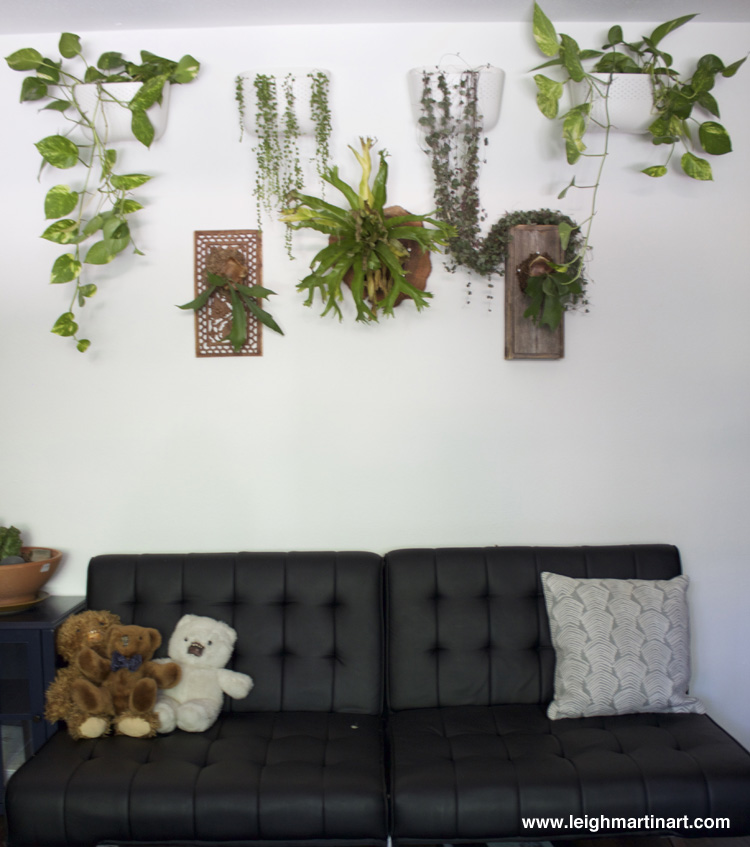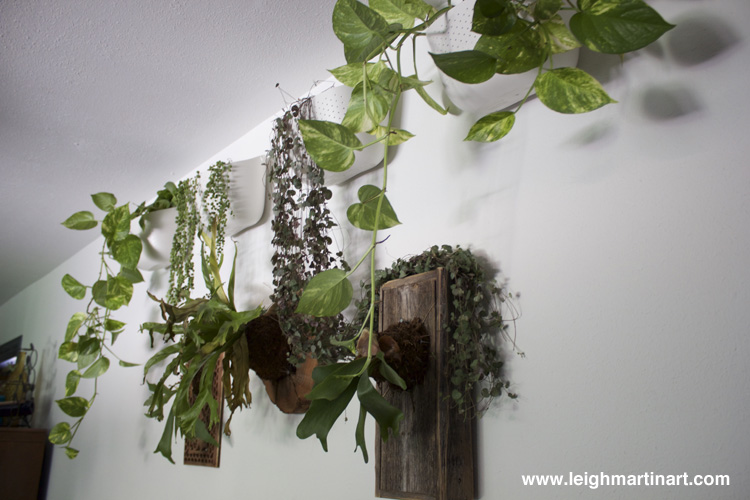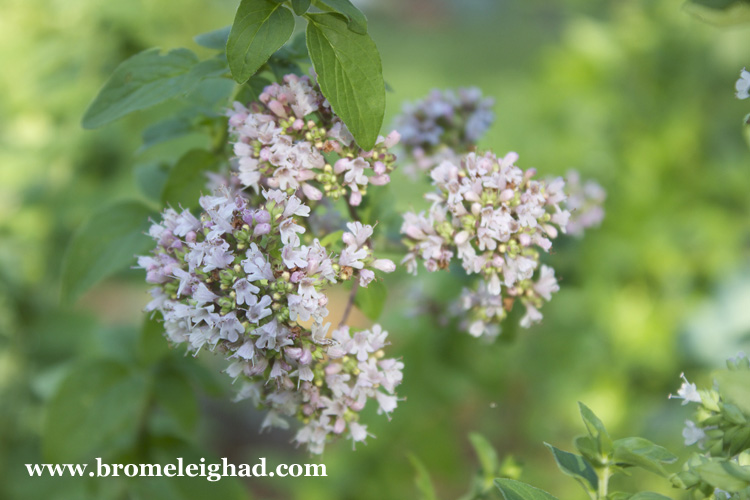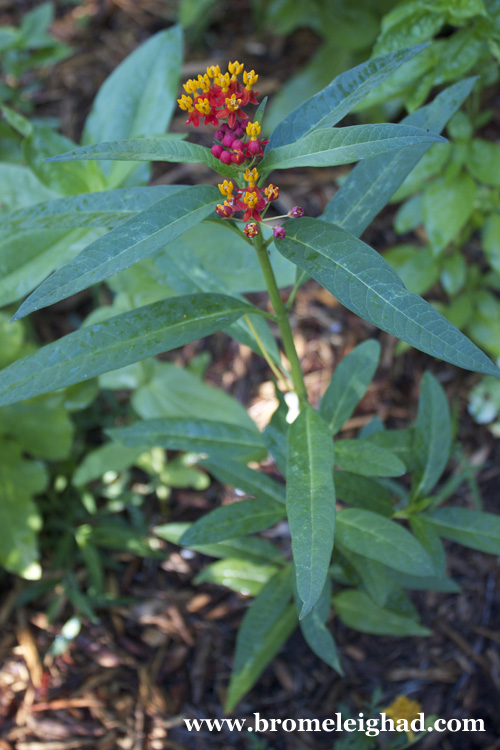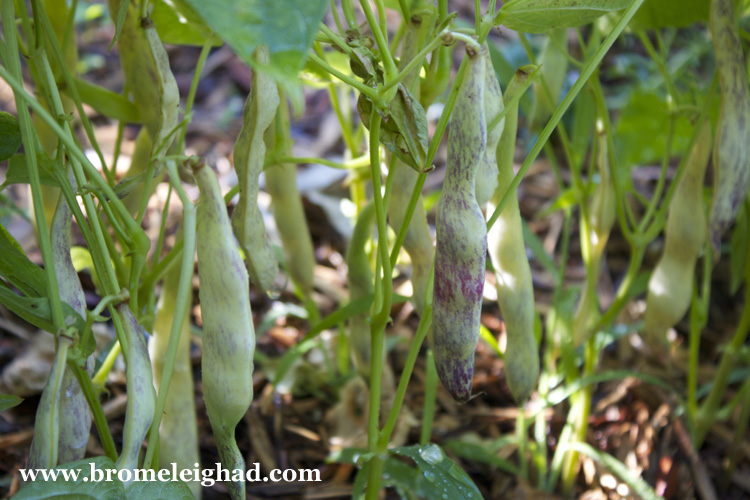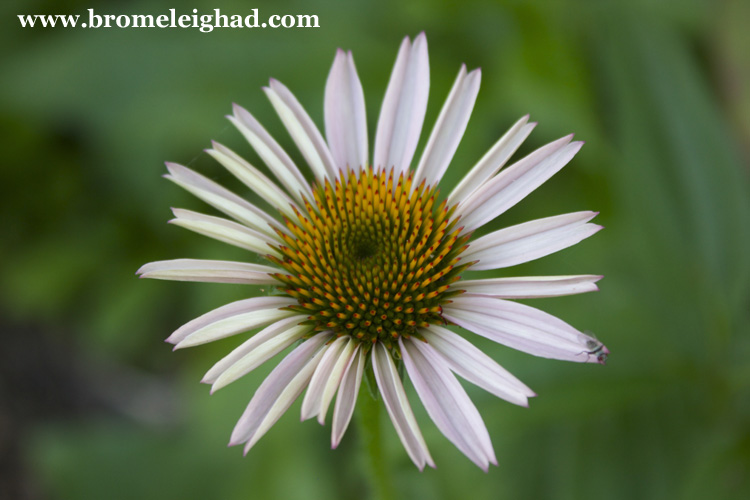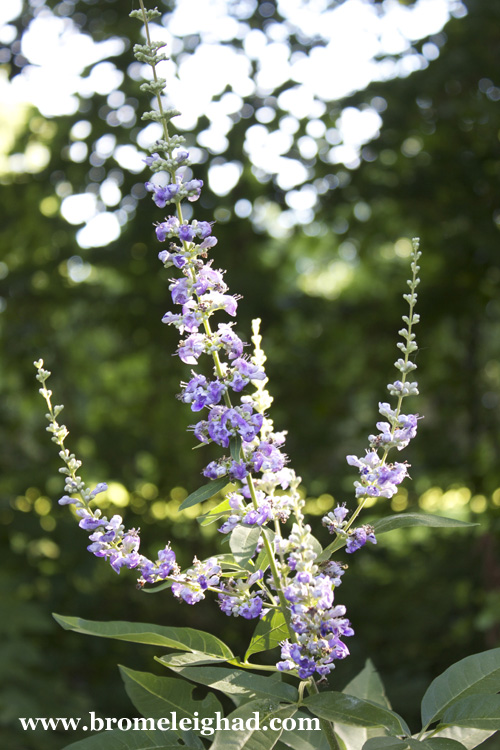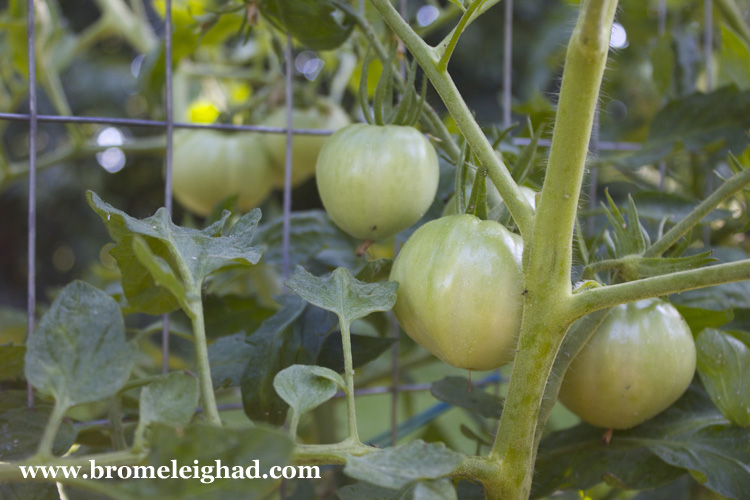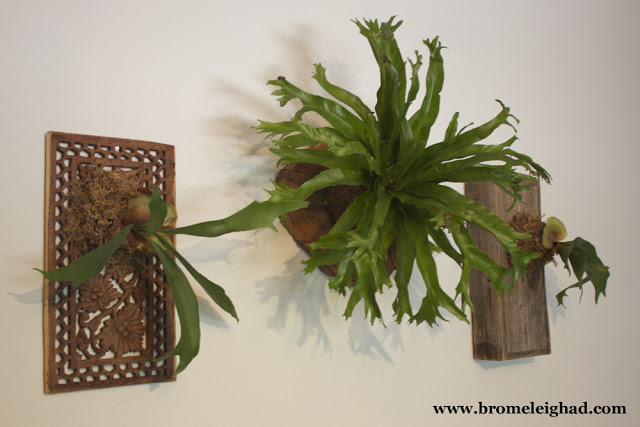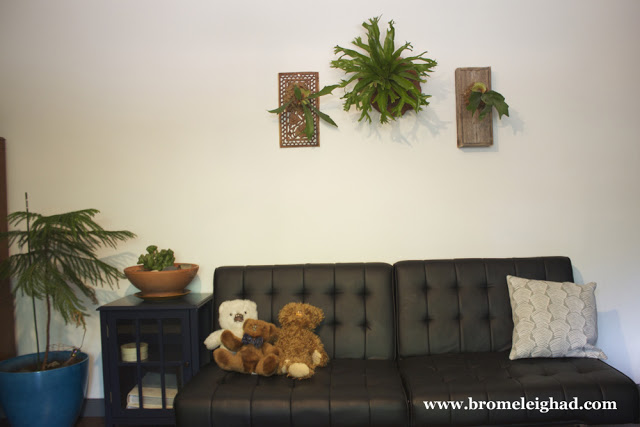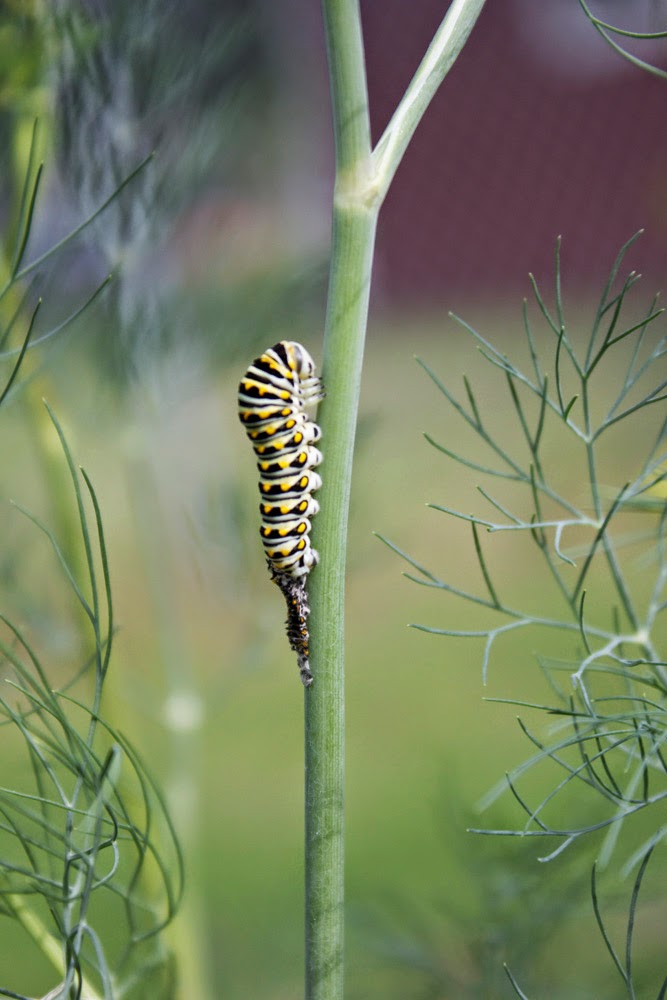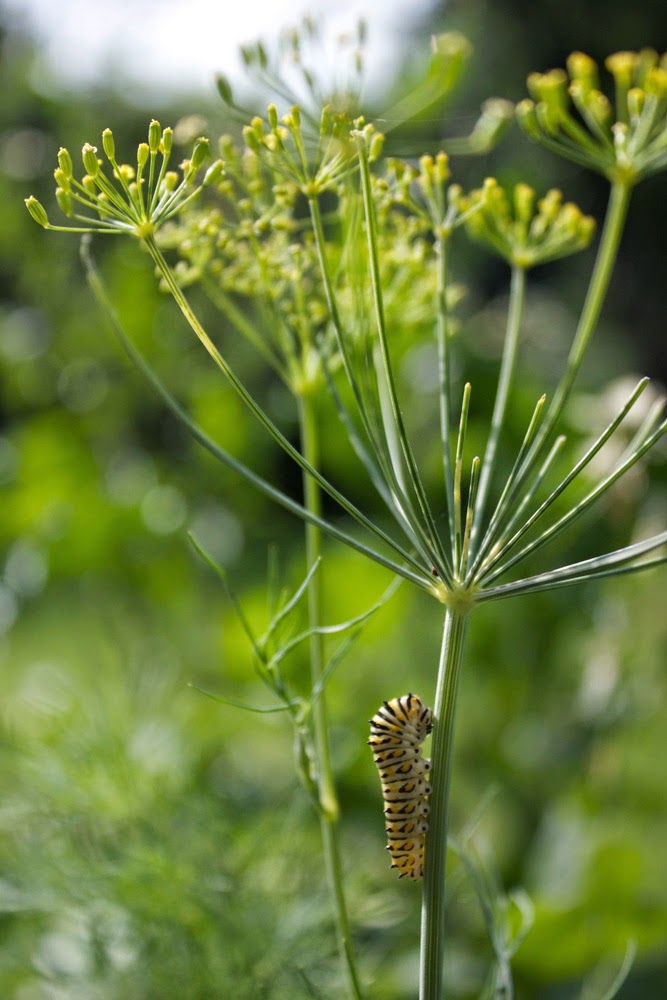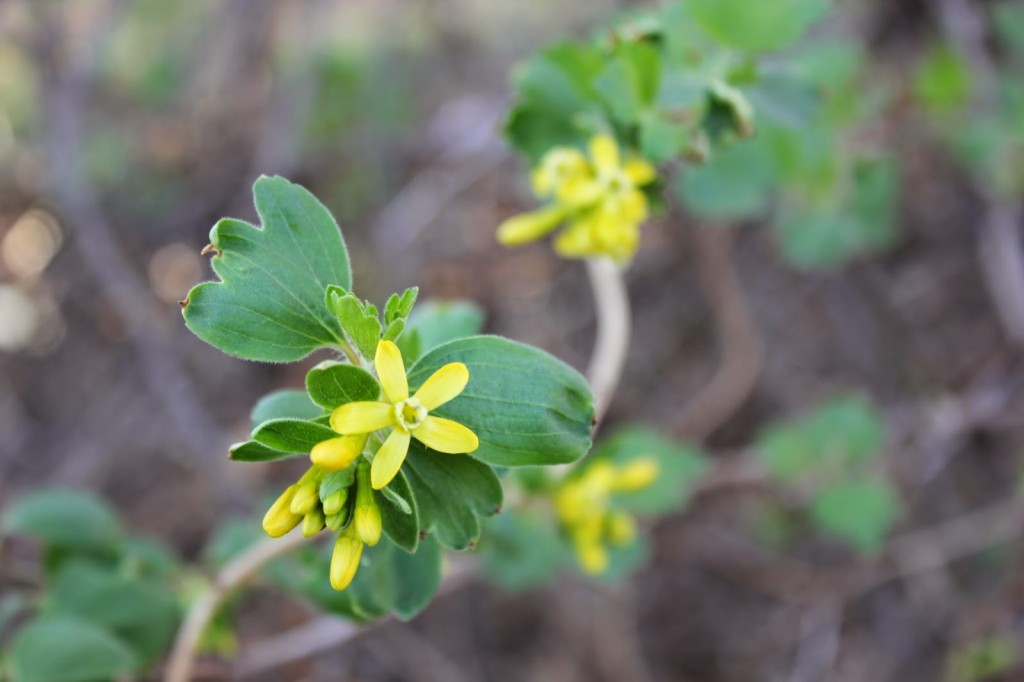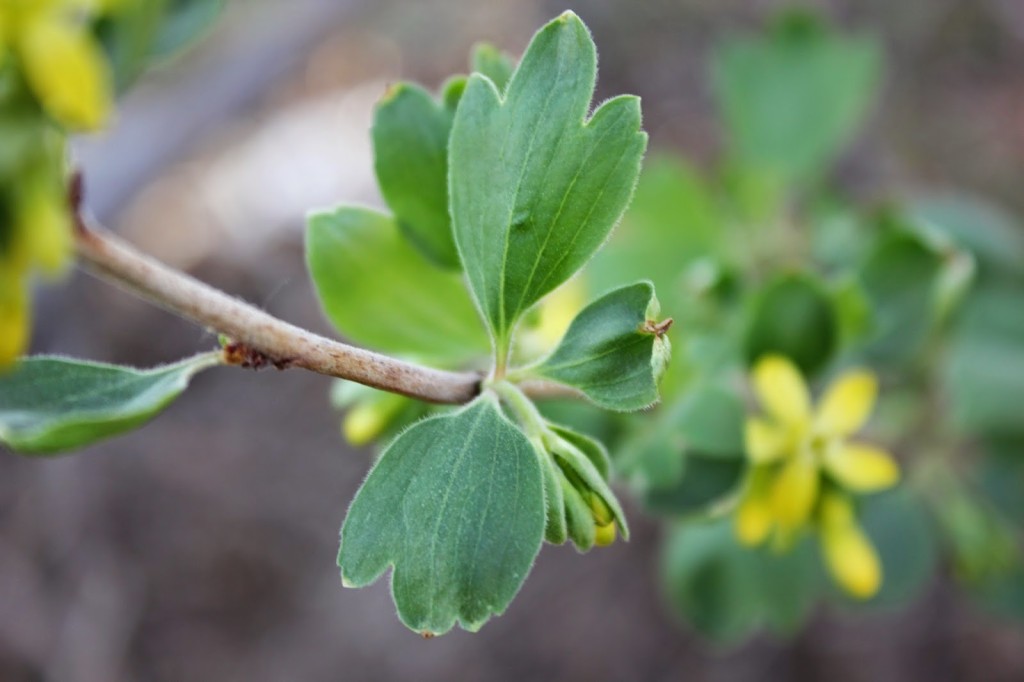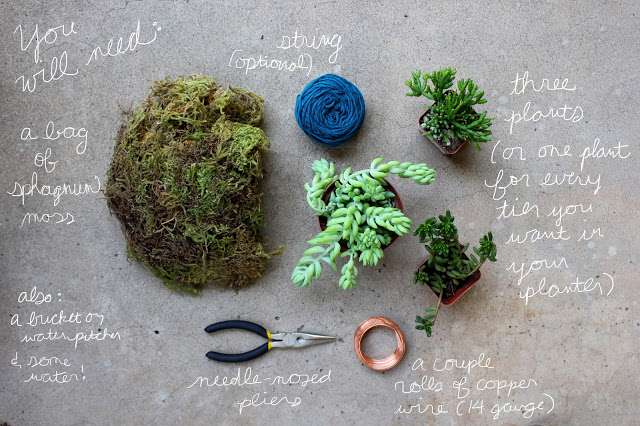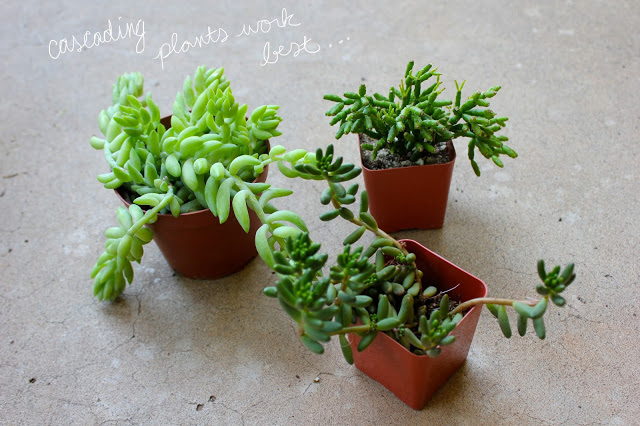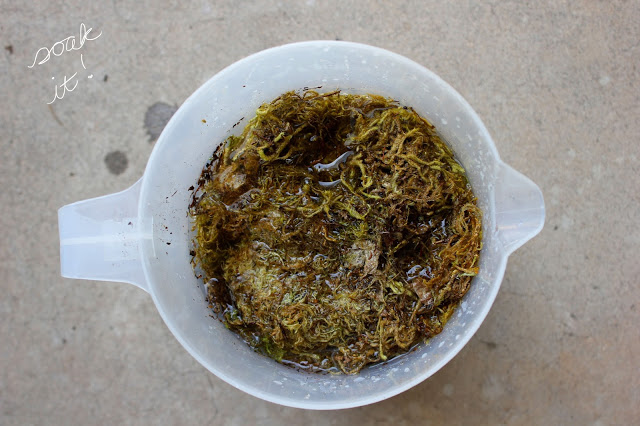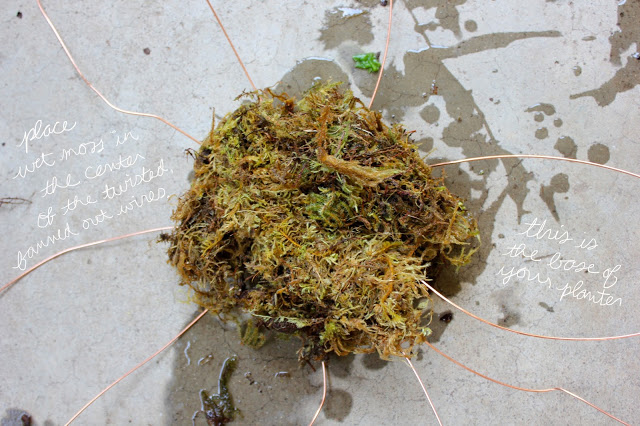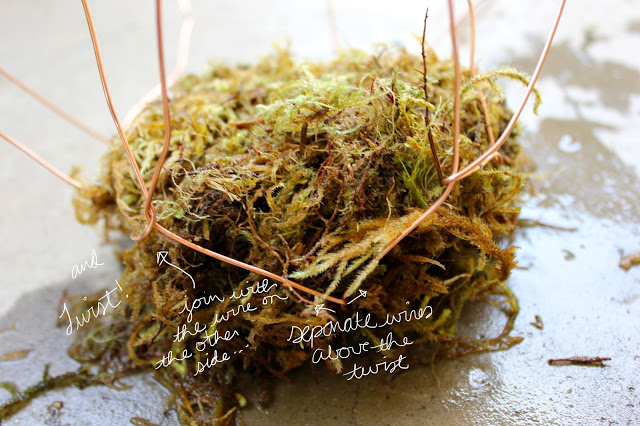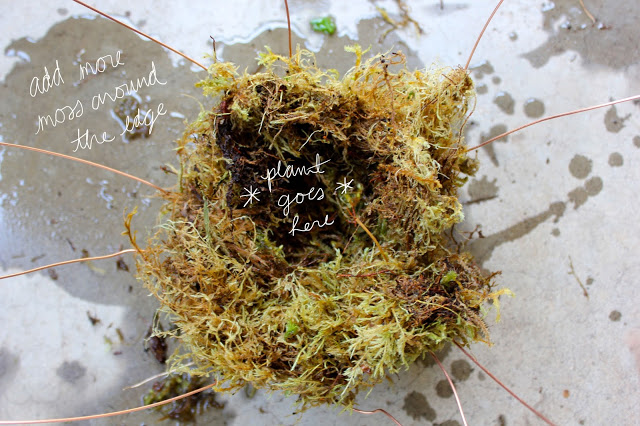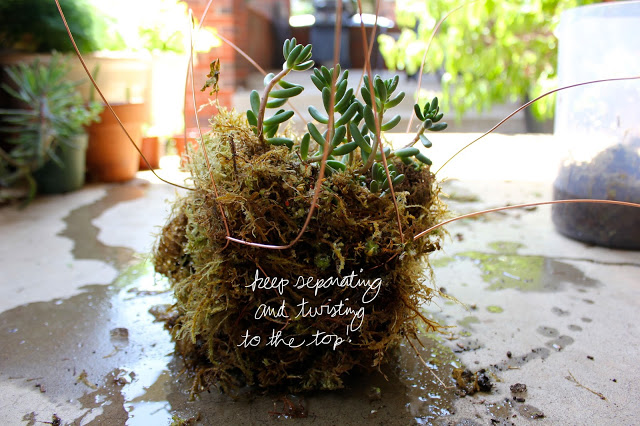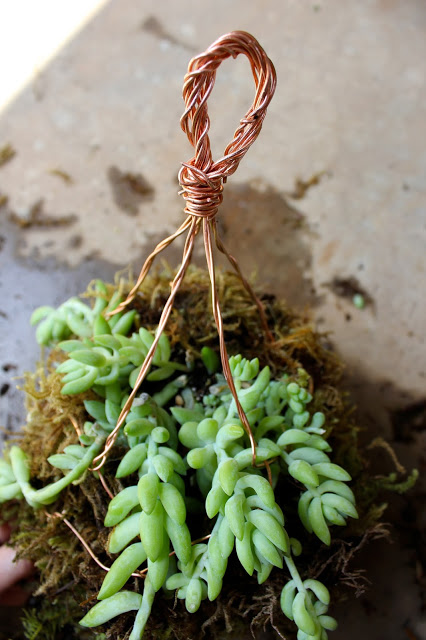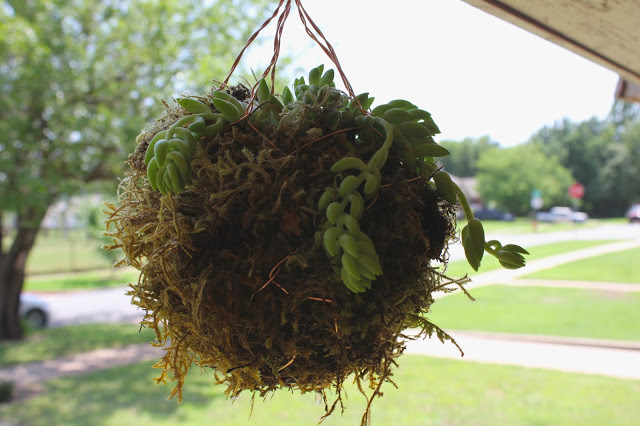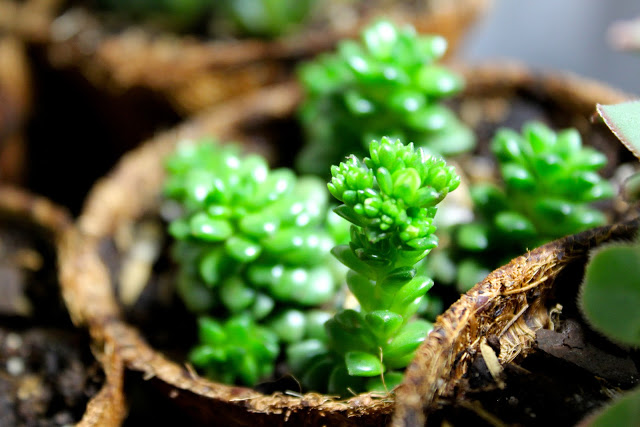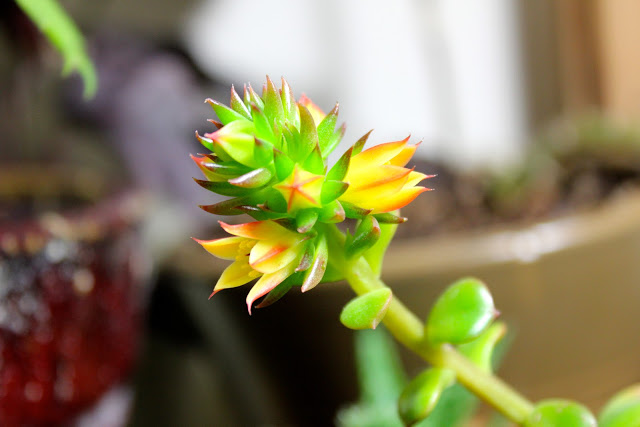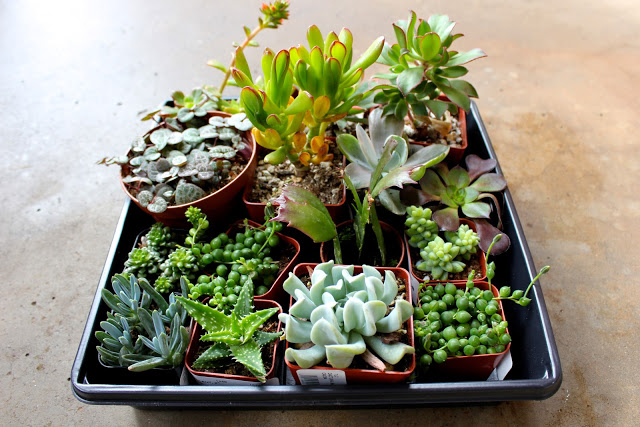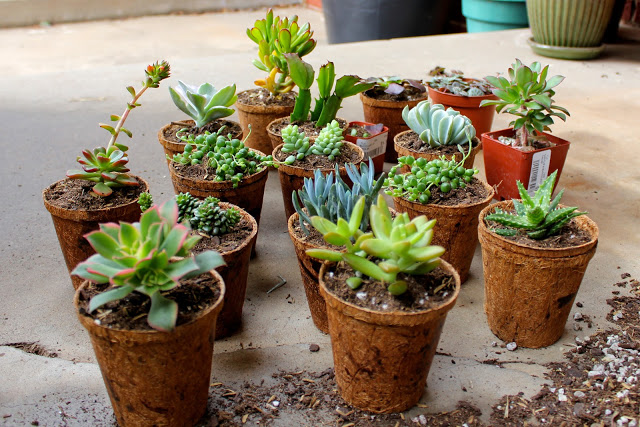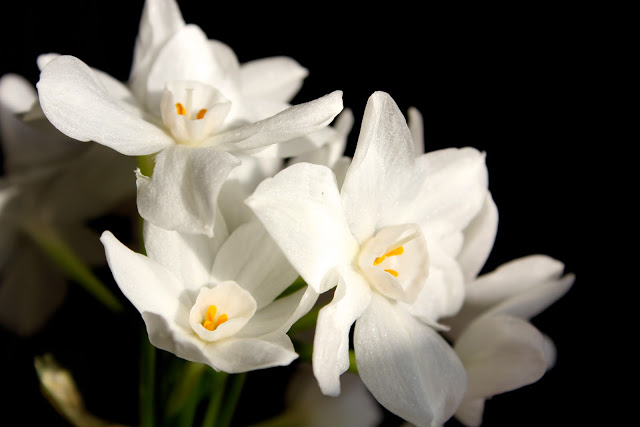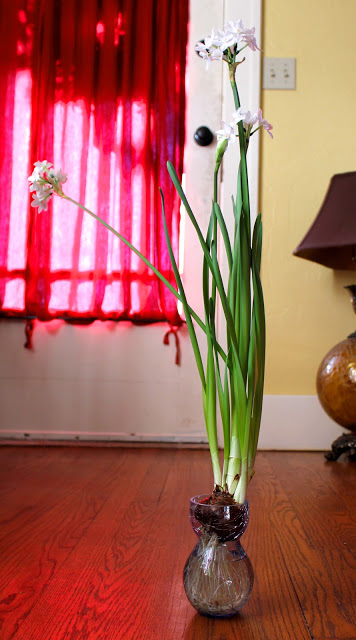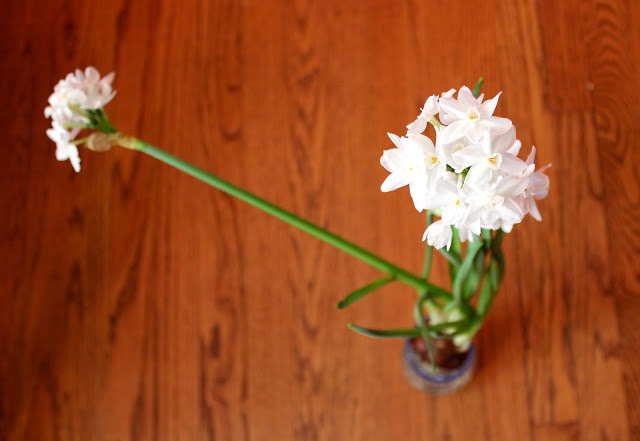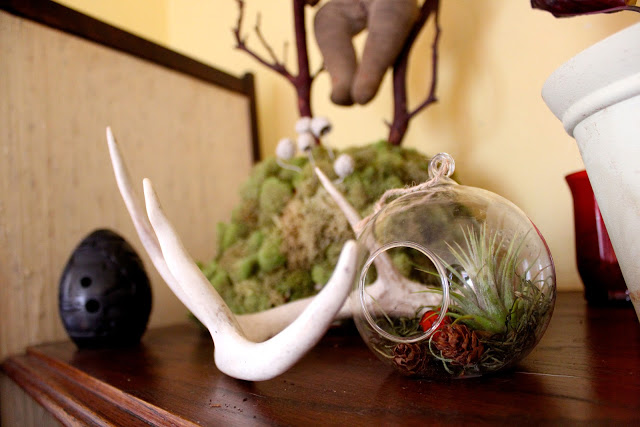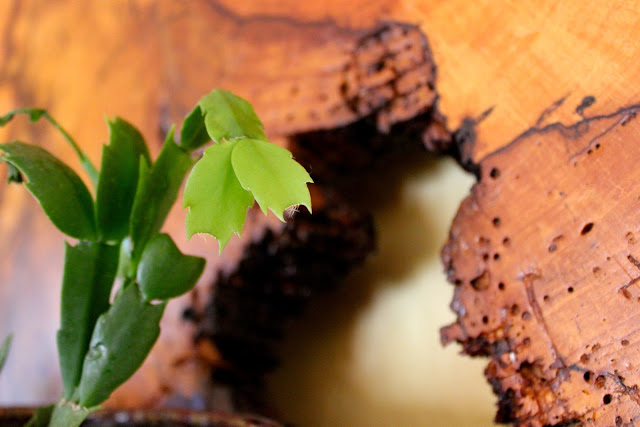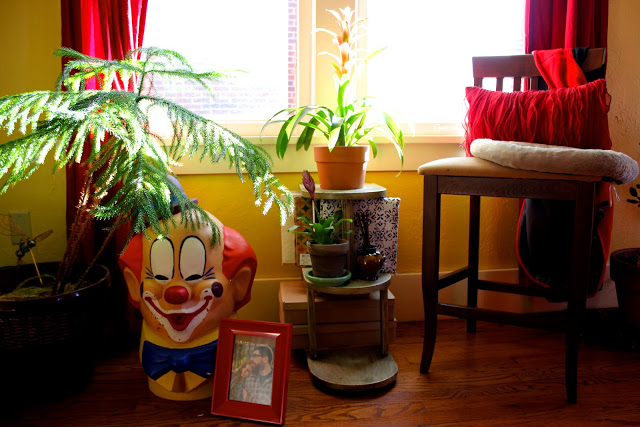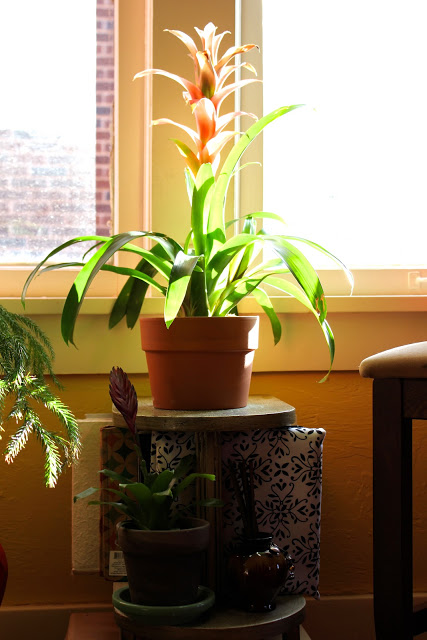Earlier in the summer, I posted about beginning the realization of a longtime dream of mine... constructing a living wall. It started out with a birdnest fern mounted on a tree cross section, and then I mounted some small staghorn ferns to hang on either side across from a big picture window in our living room. It's a pretty slow process, but adding to the wall is very satisfying - like finding the perfect piece for a gallery wall.
For my birthday in August, I got some Woolly Pocket Living Wall Planters
I installed my planters at the top of the wall so my vining plants can hang down. At some point I would like to trellis these across the ceiling or further out on the wall, but it won't be that necessary until I add more to the installation. Around the time that I was adding this phase, my birdnest fern started to look pretty sickly, and after some research I came to the conclusion that the temperature in the room was just too high for it during the day. We use an energy conservation thermostat and participate in a program through our local utility that basically leaves the house pretty warm in the afternoon. Since that area is exposed to sunlight more than other parts of the house, it tends to be the warmest. Sadly, the fern didn't make it, but I plan to get a larger staghorn to attach to its mount and hang in its place.
This post contains affiliate links, which means that I may receive a small commission if you purchase a product through the links provided, at no additional cost to you. The only products I promote are ones that I have tried and feel strongly about supporting!

